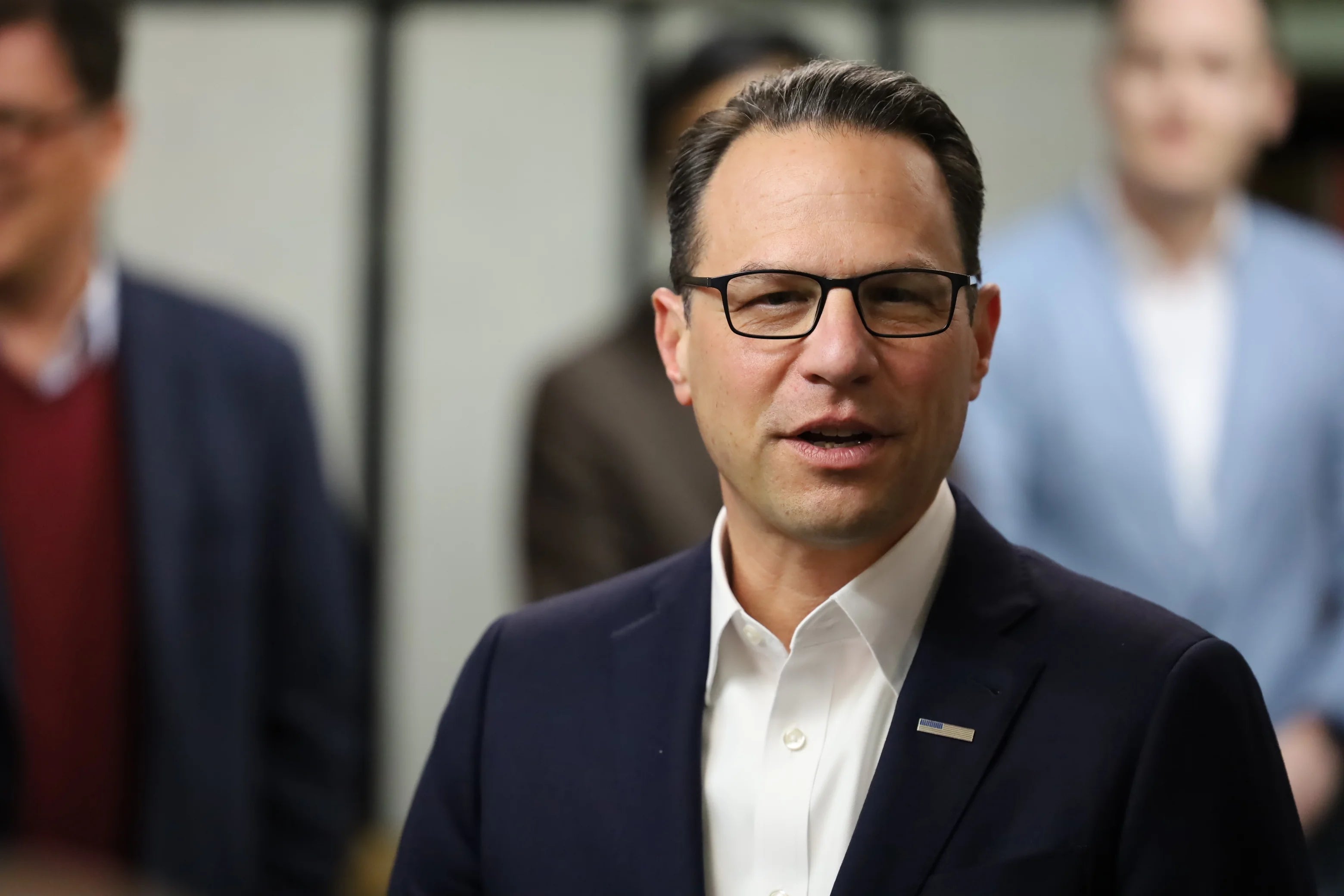Pennsylvania
Alligators mysteriously appear in Pennsylvania river

Alligators have been mysteriously appearing in a river in Pennsylvania, despite not being native to the area.
The reptiles have been spotted swimming in the Kiskiminetas River near Apollo over the past several months.
In August, officials embarked on a weeklong search for an alligator that had found its way into the area, local outlet TribLive reported. The 4-foot-long reptile, nicknamed “Chomper” by police, was spotted by two kayakers who reported it to local authorities. Once the alligator was captured, he was brought to a reptile rescue organization, Nate’s Reptile Rescue .
Now, another alligator has been spotted swimming in the river. Six kayakers had been on the same stretch of water when they spotted the reptile.
Cindy Larson/Getty
“We got excited and paddled around to get better pictures of it,” one of the kayakers, Joshua Kelley, told TribLive. “We were kayaking and saw an animal and thought it was a muskrat, but realized it was an alligator.”
The kayakers tried to approach the lost reptile to no avail. Once they were back on land, Kelley called the local police about the incident.
Shelby Mitchell, Kelley’s fiancee who had also been kayaking at the time, also saw the alligator lurking in the river.
“I definitely think someone released their poor pets into the river,” Mitchell told the news outlet. “I feel bad for the poor guy.”
Alligators’ preferred habitat is freshwater rivers. They are native to Florida, Louisiana, Georgia, Alabama, Mississippi, the Carolinas, Texas, Oklahoma and Arkansas. However they are certainly not native to Pennsylvania.
It is not certain whether the alligators will be able to thrive in this part of the U.S, as it depends what food sources are available as well as the conditions of the river.
It is not certain how the alligators got there, but TribLive reported that Chomper had likely been placed in the river by someone on purpose. It is likely the same case with the other alligators.
Some people keep alligators as pets. But they can prove tricky to keep, as they need a lot of space and can be aggressive when provoked.
Alligators do not typically hunt or hurt people, but they are extremely territorial animals. This means that conflicts can occur, especially if a person is not aware of their presence. As these alligators are in an area where people will not expect them, this could pose a danger.
These recent alligator sightings are only two of several that have occurred in the state this year, TribLive reported.
Do you have an animal or nature story to share with Newsweek? Do you have a question about alligators? Let us know via nature@newsweek.com.

Pennsylvania
Florida officially has more Wawa stores than Pennsylvania and New Jersey: report

PENNSYLVANIA – It appears Florida’s “Gottahava Wawa” more than the Delaware Valley these days!
By the numbers:
Wawa has 1,121 locations in 12 states, along with the District of Columbia, according to data released by ScrapeHero.
It seems like the local staple keeps popping up on every corner, with 293 stores in New Jersey, another 263 in Pennsylvania, and just 50 in Delaware.
However, Florida now boasts the highest number with a whopping 304 locations, which is 27 percent of all Wawa stores in the U.S.
Has the “Sunshine State” officially taken over as the new “Wawa Capital?”
The backstory:
The first Wawa Food Market opened in Folsom, Pennsylvania, in 1969, followed by stores in Delaware and New Jersey by 1969.
It became a convenience store staple, supplying everything from hoagies and coffee to gas across the entire Delaware Valley.
Florida didn’t get its first location until 2012, but Wawa has been expanding across the state ever since.
The Source: Information from this article was sourced from ScrapeHero and Wawa.
Pennsylvania
Pennsylvania to provide nearly $8M to address teacher shortages

In May, Gwynedd Mercy University said it would partner with Bucks County Community College and BCIU to create the state’s first undergraduate apprenticeship program, with a focus on special education. This grant will help fund the program, said Deborah Schadler, coordinator of undergraduate education at Gwynedd Mercy.
Chester County Intermediate Unit 24 ($600,000): It will expand its post-baccalaureate special education apprenticeship program in high-need districts. The grant will also allow the Intermediate Unit to provide certification and mentorship programs to student teachers.
Esperanza Academy Charter School in Philadelphia ($400,000): The grant will be used by a partnership between Esperanza Academy and Eastern University to help paraprofessionals earn Bachelor of Science degrees in special education and acquire teacher certifications.
In the 2023-24 school year, the state Department of Education said it issued more than 6,600 teachers’ certificates, about 100 more than the previous school year. Still, about 5,500 teaching vacancies remain in Pennsylvania.
Why teaching shortages?
The teacher shortage is fueled by low pay and difficult working conditions, education advocates say, along with more teachers leaving the profession. The statewide attrition rate is about 7%.
Laura Boyce, executive director of Teach Plus, a nonprofit group, said the apprenticeship model for teachers is becoming increasingly popular nationwide.
In a related matter Monday, Pennsylvania Department of Human Services Secretary Dr. Val Arkoosh highlighted Gov. Shapiro’s 2025-26 budget proposal for a $55 million investment to give $1,000 retention and recruitment bonuses to eligible childcare providers in the state’s Child Care Works Program.
The state estimates that there are 3,000 childcare worker vacancies statewide. More than 300,000 children in Pennsylvania participate in the state’s childcare system.
“An early childhood education experience can shape the educational, social and emotional development of our youngest Pennsylvanians, providing a foundation that will reap benefits throughout their lives,” said Arkoosh in a visit to the Children’s Home of Pittsburgh & Lemieux Family Center on Monday.
Pennsylvania
Victims of violence share stories, fight for resources at Pa. state capitol

A group of advocates from around Pennsylvania are heading to Harrisburg on Tuesday hoping that state leaders will hear their stories and make legislative changes to help victims of violent crimes.
The push at the capitol on June 3 aims to give victims the resources and security they need while going through traumatic and tough times.
Yolanda Jennings is a survivor of domestic abuse and is all too familiar with losing loved ones to violence.
In 2004, Jennings said that her sister was stabbed to death by her fiancé during a domestic violence dispute. Then, in 2019, she said her cousin was shot and killed by the father of her children. Jennings also said that, in 2024, police shot and killed her son while he was having a mental health crisis.
“My faith is paramount to my survival. I could not do it if I did not have my faith. And then being able to help people every day. Knowing that all the things that I’ve gone through that now I can help somebody else get through their trauma,” Jennings told NBC10.
If you or someone you know is experiencing domestic violence, contact the National Domestic Violence Hotline by calling 1-800-799-SAFE (7233), visiting www.thehotline.org or texting LOVEIS to 22522.
That’s why, Jennings will join a coalition of crime victims, community members and advocates with crime survivors for safety and justice to bring their voices to Harrisburg to meet with state leaders.
“We are hoping to share with them our stories. To put a face on the people who need these services, because we are all survivors and nobody can tell our story better than us,” Jennings explained. “The whole society is affected by these things. And we just want to make sure that people get the resources that they need.”
The group is pushing for three bills to get passed.
- House bill 72: Provides tenants rights in cases of violence.
- House bill 1042: Offers nonviolent offenders vocational and education credit while serving time.
- House bill 964: Provides employment leave for victims and their families of violence.
The Pennsylvania Coalition Against Domestic Violence said that 119 people died because of domestic violence in the Keystone State in 2022. The organization reports that it serves about 90,000 people in the commonwealth each year.
The organization is also going to Harrisburg on Tuesday looking to secure $5 million to build three new trauma recovery centers in the state in Philadelphia, Pittsburgh and Altoona. As of 2025, there is only one and it’s located in Harrisburg.
-

 Movie Reviews1 week ago
Movie Reviews1 week agoMOVIE REVIEW – Mission: Impossible 8 has Tom Cruise facing his final reckoning
-

 Politics1 week ago
Politics1 week agoTrump honors fallen American heroes, praises God in Memorial Day address: 'Great, great warriors'
-

 Politics1 week ago
Politics1 week agoTrump admin asking federal agencies to cancel remaining Harvard contracts
-

 Culture1 week ago
Culture1 week agoCan You Match These Canadian Novels to Their Locations?
-

 Politics1 week ago
Politics1 week agoHomeland Security chief Noem visits Netanyahu ahead of Jerusalem Day
-

 News1 week ago
News1 week agoHarvard's president speaks out against Trump. And, an analysis of DEI job losses
-

 Technology1 week ago
Technology1 week agoThe Browser Company explains why it stopped developing Arc
-

 News1 week ago
News1 week agoRead the Trump Administration Letter About Harvard Contracts















